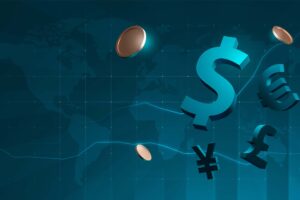
Global Recession Risks Rise as Central Banks Raise Rates
There is no doubt that what happens in the Federal Reserve meetings and the decisions taken, have a huge impact on the financial Markets. During their latest meeting, The FED raised interest rates by 50 BP. Additionally, they have raised their terminal rate from 4,80% to 5,25%.
The Federal Reserve’s updated economic projections this week appeared to incorporate an assumption that raised eyebrows: inflation would prove resurgent at the end of this year.
The quarterly projections showed Fed officials now expect so-called core inflation — which excludes food and energy — to end this year around 4.8%, up from the 4.5% figure they forecast in September.
Yet that number looks much too high to Wall Street economists following a surprisingly-soft Labor Department release on consumer prices Tuesday, even though Chair Jerome Powell said it was reflected in the projections.
Should the Fed achieve its goal of reducing inflation, it’s all but guaranteeing a punishing recession next year caused by a rapidly deteriorating labor market.
Fed Chair Powell strained credulity at his latest press conference while attempting to make the case for a potential soft landing next year that sees inflation come down without the economy contracting.
Powell struggled to fit the FOMC’s own predictions about the economy next year into a narrative that avoids a hard landing — or recession.
Powell hammered home the strong job market and didn’t mince words when he said, “There’s an imbalance in the labor market between supply and demand,” noting that it will take a “substantial period” to get the labor market back in equilibrium.
Federal Reserve Board Chairman Jerome Powell looks on during a news conference following the announcement that the Federal Reserve raised interest rates by half a percentage point, at the Federal Reserve Building in Washington, U.S., December 14, 2022. REUTERS/Evelyn Hockstein
The fastest inflation rate since the 1980s has altered what economists call the “reaction function” of policymakers including Fed Chair Jerome Powell. Normally, they’d be expected to ease credit as economies crumbled to limit damage to households and corporations.
But with price growth well above their 2% targets, central bankers are moving in the opposite direction, even in the face of economic contractions. And they’re insisting rates will stay higher for longer to stamp out inflation – though many investors are betting that stance won’t persist as economies buckle and unemployment rises.
“There’s a growing sense among the central banks that they’d rather risk doing too much,” Harris said. “They don’t want to underdo it and have to come back and hike again later.”
The danger is that central bankers will make the opposite mistake to their one last year.
Back then, they underplayed the dangers of mounting price pressures in economies still struggling after the pandemic. That allowed inflation to get out of control, prompting this year’s rapid reversal with huge rate hikes.
At issue for the Fed has been inflation, which is currently running well above its 2% target.
In November, headline inflation as measured by the Consumer Price Index (CPI) came in at 7.1% over the prior year. In June of this year, inflation topped out north of 9%.
The Fed’s forecasts released on Wednesday showed inflation slowing next year as unemployment rises. But with inflation standing at 3.5% by year-end 2023, the Fed’s own projections show prices still rising at an unacceptable rate.
Since 1960, every recession except the pandemic-induced downturn of 2020 kicked off with inflation running at 3.7% or hotter. And only in 1974 did the recession end with inflation higher than 2.7%.


